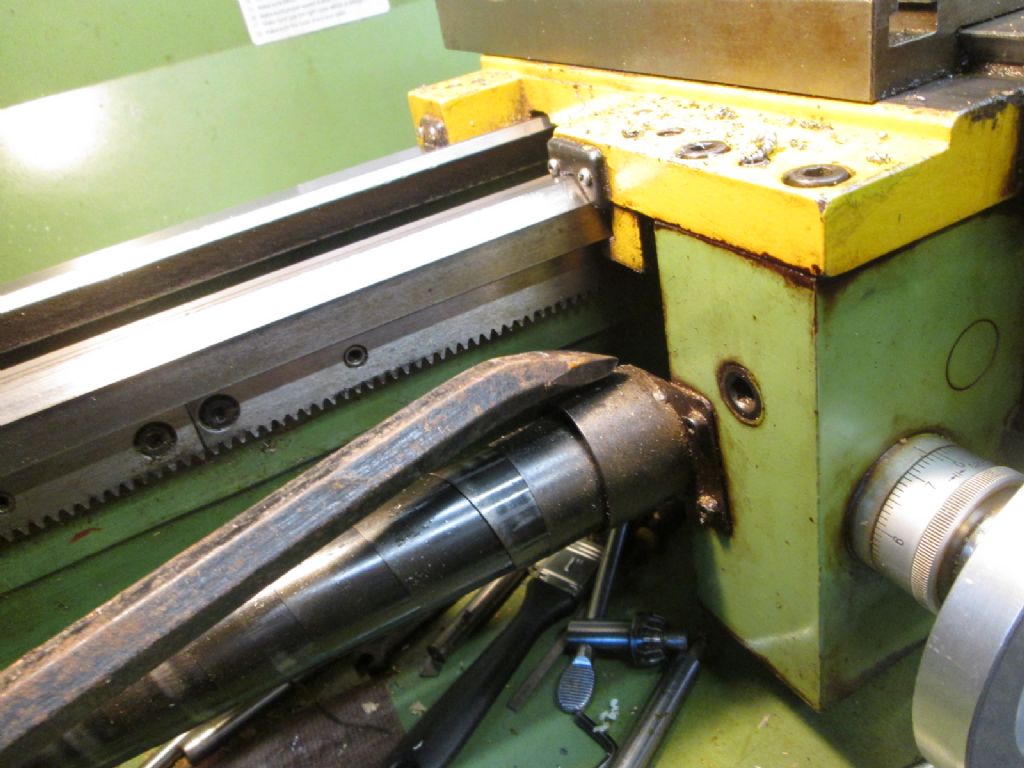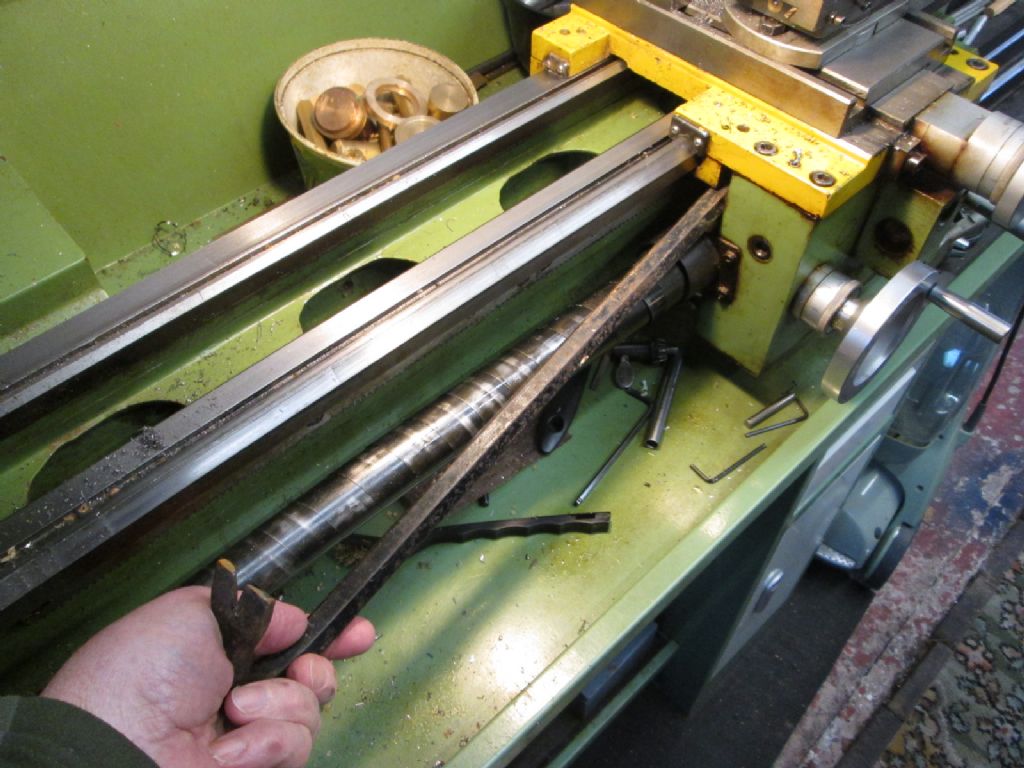Posted by Howard Lewis on 25/01/2020 14:43:38:
When I jammed my Saddle against the Headstock, the rollpin ensured that the pinion and its shaft bent.
Obviously a regular happening since Warco could supply from stock, at a total cost approaching £70. I cut my own 13T gear, eventually, having found that the chart for the HV6 had errors, including, of course, the one for 13 divisions!
16mm Silver Steel from Cromwell Tools, (£12 ), a 1.5 Mod cutter from RDG (£22 ) and we were back in business, after a few days. Then made the 5 mm OD, 2.5 mm ID, shear pins. Not needed since, Thank Goodness!
Howard
Here's the crowbar fix to the bent pinion. Pic 1 shows the end of the crowbar to use, pic 2 shows it in place with the chisel toe on top of the pinion shank and the fulcrum up under the saddle corner pad:-


You have to be able to get the saddle far enough from the headstock to get room for the crowbar, and get the highspot on the pinion at the top, ie. where it binds tightest against the rack, so a *very* severe bend might not be fixable this way. But if it's possible, it costs nothing but a minute or two's time – though to be fair, we got the crowbar for free because the previous house-owners left it in a cupboard…
Edited By Mick B1 on 25/01/2020 17:03:06
peter smith 5.






